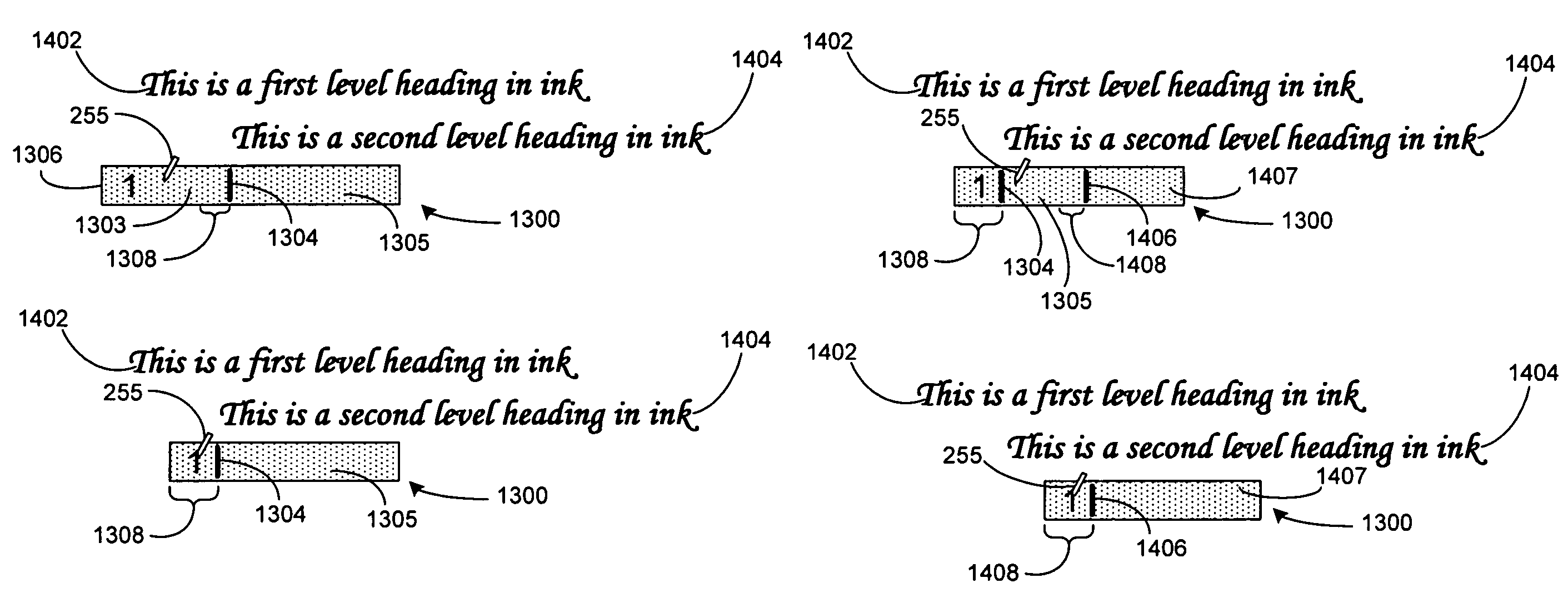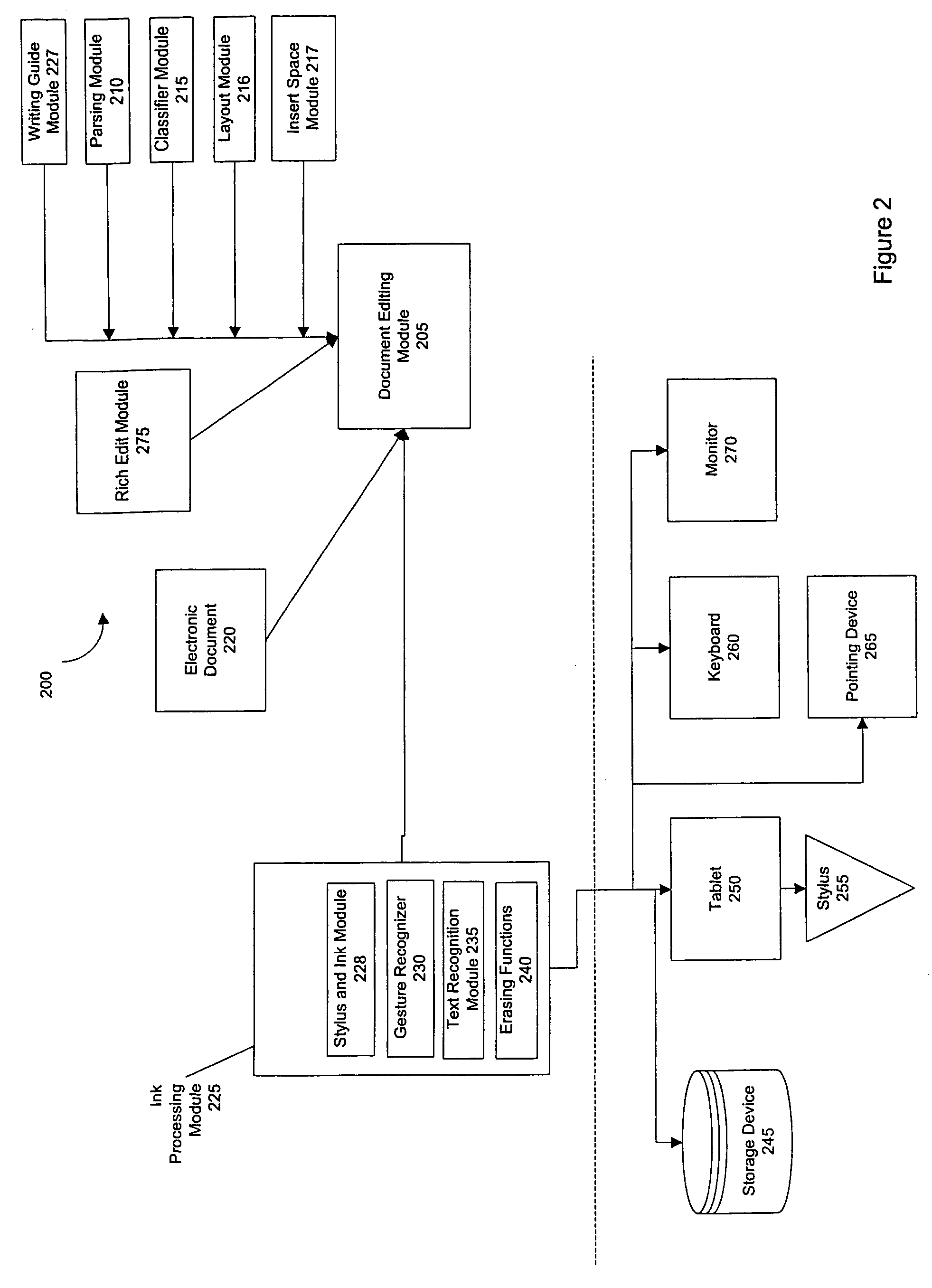Writing guide for a free-form document editor
a free-form document editor and writing guide technology, applied in the field of writing guides, can solve the problems of slow typing speed, cumbersome typing, and inability to easily manipulate or transfer to other contexts, and achieve the effect of high accuracy
- Summary
- Abstract
- Description
- Claims
- Application Information
AI Technical Summary
Benefits of technology
Problems solved by technology
Method used
Image
Examples
Embodiment Construction
[0048]The present invention can provide a writing guide as a user interface for a free-form document editor to allow creation of an electronic document from handwritten electronic ink. The writing guide can indicate to a user whether the editor has classified ink strokes as handwriting or a drawing. For handwriting, the present invention can present a handwriting guide to the user. The handwriting guide can provide detailed structural information regarding the format structure of the electronic document. For example, the handwriting guide can indicate bullets and indent levels for input handwriting. Additionally, the handwriting guide can indicate whether multiple lines are formatted as one paragraph or as individual lines. For a group of ink strokes classified as a drawing, a drawing guide can be presented. The drawing guide can allow the ink strokes to be formatted and manipulated as a group.
[0049]Exemplary embodiments will be described generally in the context of software modules...
PUM
 Login to View More
Login to View More Abstract
Description
Claims
Application Information
 Login to View More
Login to View More - R&D
- Intellectual Property
- Life Sciences
- Materials
- Tech Scout
- Unparalleled Data Quality
- Higher Quality Content
- 60% Fewer Hallucinations
Browse by: Latest US Patents, China's latest patents, Technical Efficacy Thesaurus, Application Domain, Technology Topic, Popular Technical Reports.
© 2025 PatSnap. All rights reserved.Legal|Privacy policy|Modern Slavery Act Transparency Statement|Sitemap|About US| Contact US: help@patsnap.com



